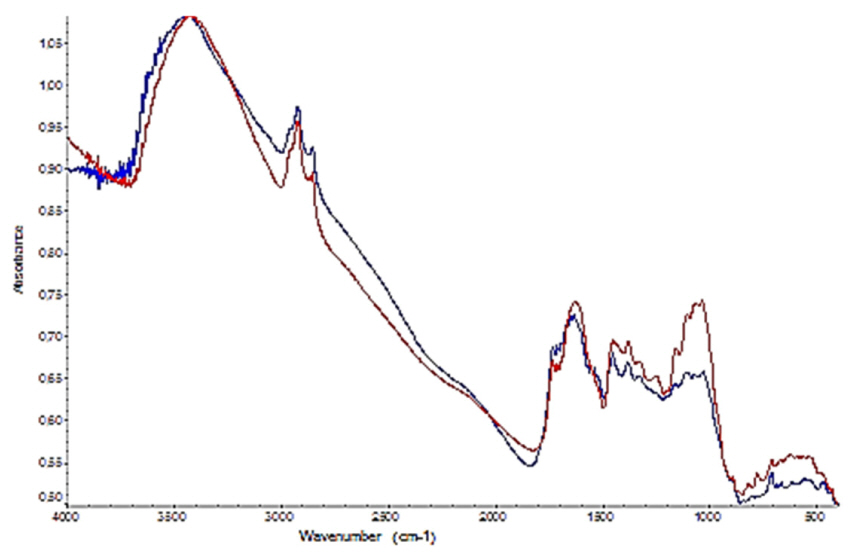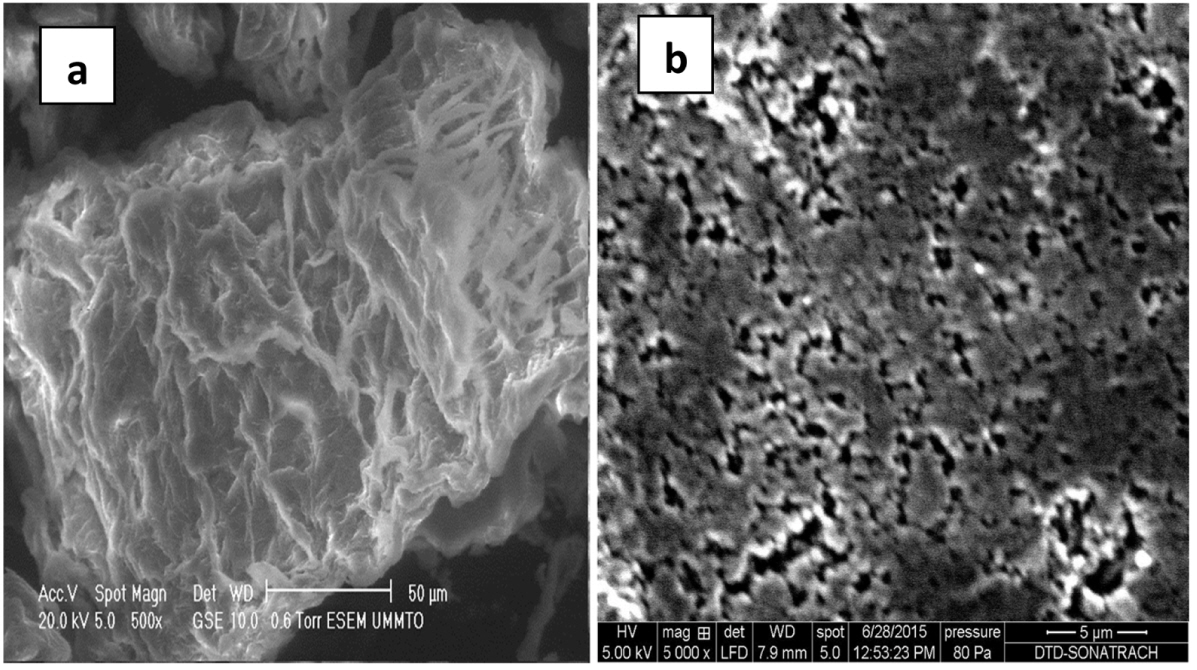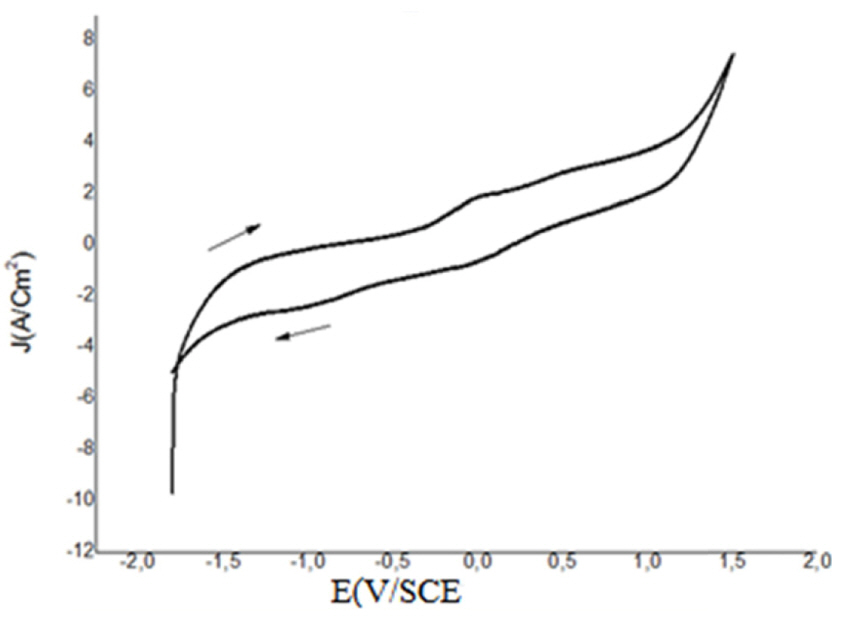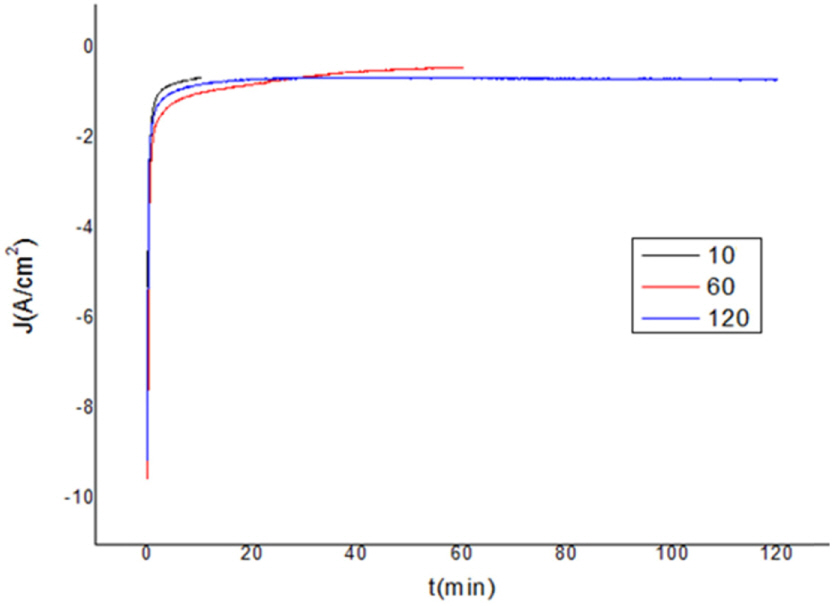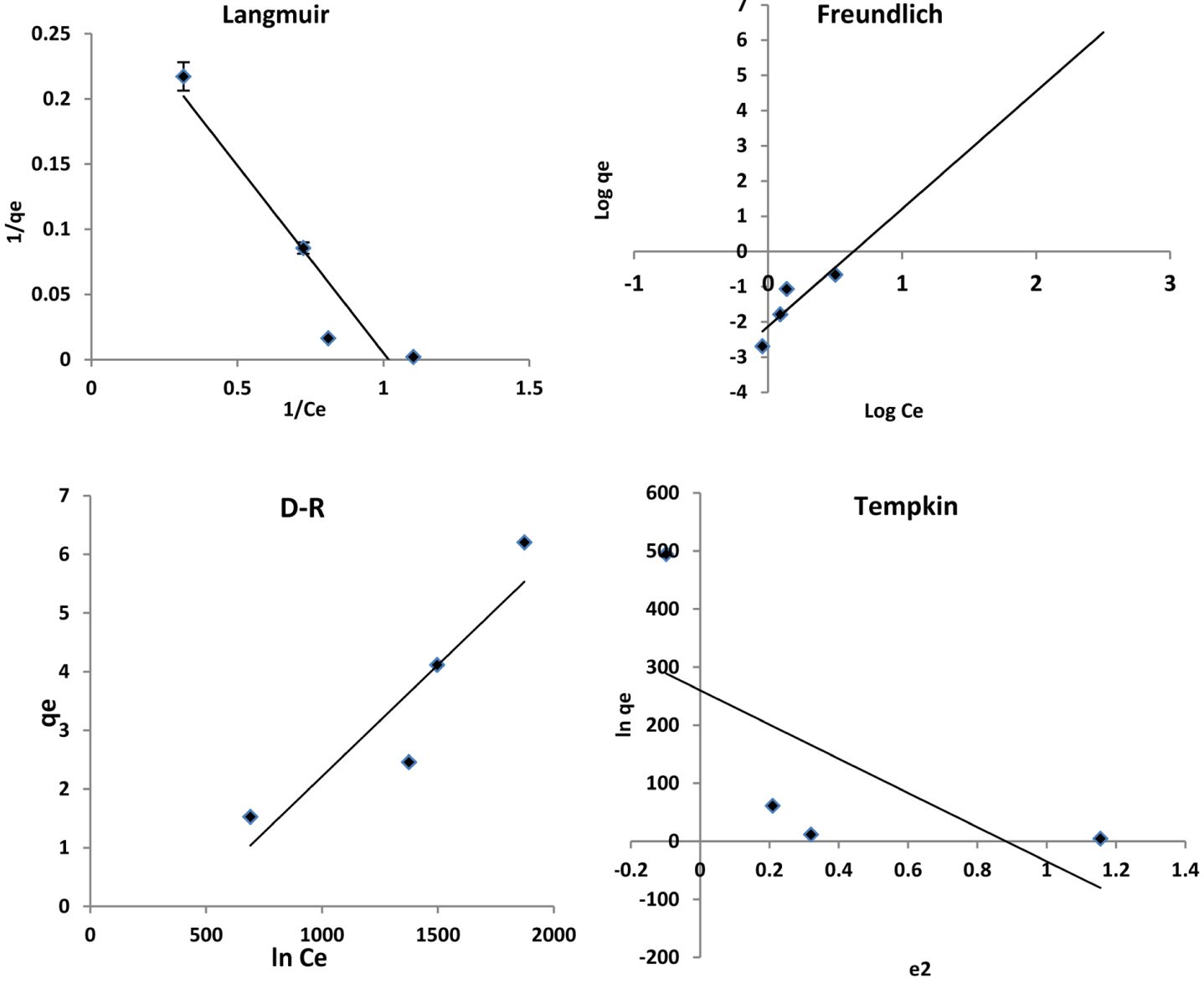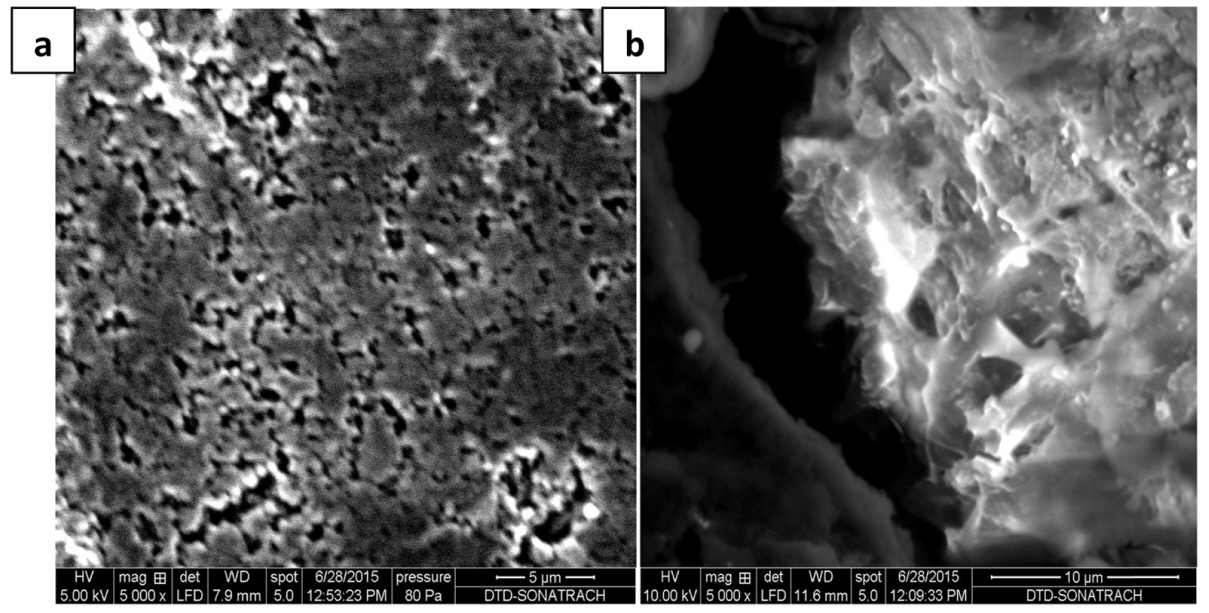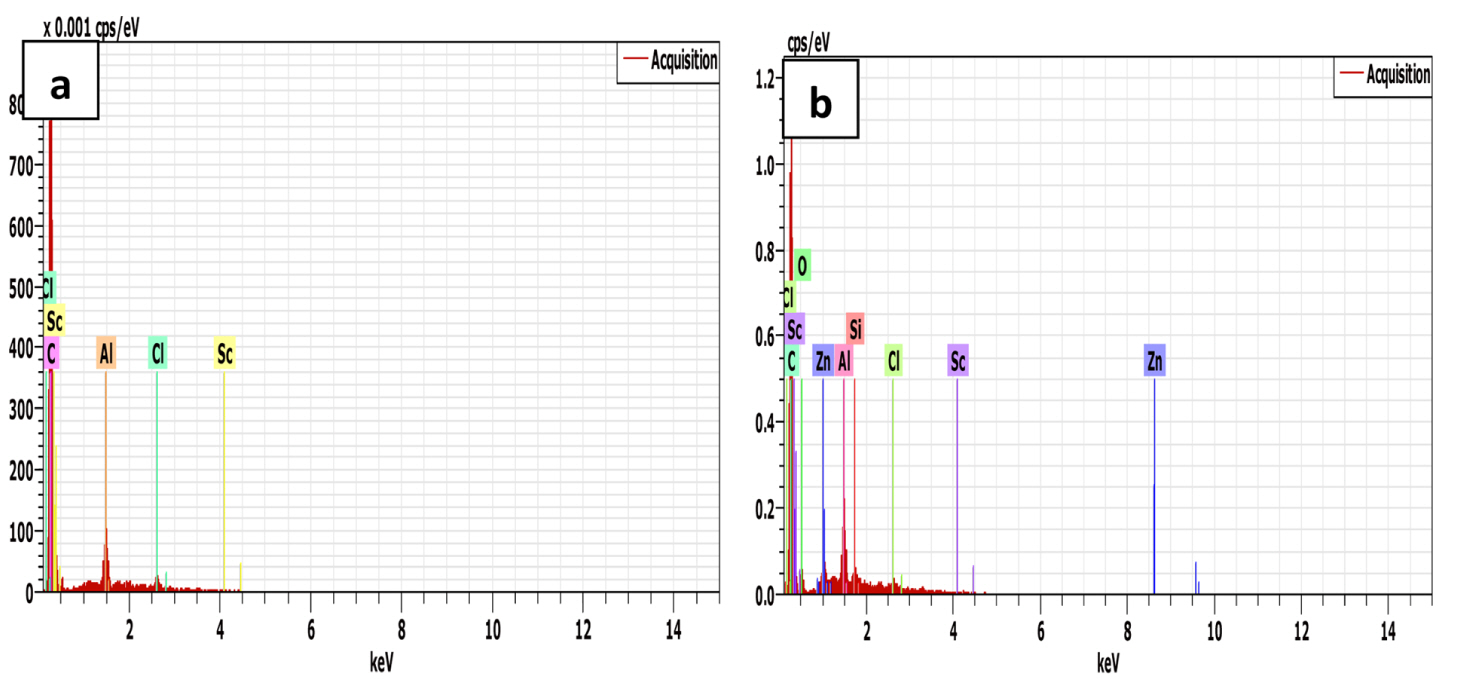1. Introduction
The contamination of waters by heavy metals such as cadmium, lead, zinc, chromium and copper is a major environmental problem that arouses from various industrial effluents. These ions are very dangerous for the environment due to their non-biodegradability and persistence in ecological systems and in the food chain. These pollutants are considered very dangerous and toxic to human health and the environment, which requires the development of new decontamination technologies based on biodegradable materials [1-5].
Zinc is considered as an essential element for life and it acts as a micronutrient in metabolic processes [6,7]. It also can be used in the galvanizing process, in the pigments, in the stabilizers, the thermoplastics, in the structure of some metallic alloys and in the batteries. However, high concentration of zinc can present certain toxicity for the human health, ecosystems and the environment including; irritability, muscle stiffness, loss of appetite and nausea [7]. Since, it is classified one among thirteen major toxic metals listed by the US Agency for Environmental Protection (USEPA) [7]. The limit concentration of exposition is fixed at 5 mg/L for zinc in drinking water by the World Health Organization [6,7].
Several techniques are recommended for the recovery of metals from wastewater. Many of them are considered as conventional methods, while others remained to be applied at the experimental stage [3]. The most conventional technologies used for the removal of toxic metals in industrial wastewater including ion exchange, extraction, reverse osmosis, chemical precipitation, membrane separation, evaporation, fixation / solidification, filtration, adsorption, etc. These methods are neither efficient, nor economical when heavy metals are present in wastewater at low concentrations [3,5,7,8]. Moreover, they are based on the estimation, assessment and comparison of many critical parameters such as cost, simplicity of design and operation, availability, efficiency and selectivity to toxic substances. For these reasons, several studies were carried out by using natural adsorbents for the removal of heavy metals from waste water [9-16,3,5,7]. As a result, electro-sorption technique has found an important case in the acceleration and improvement of the zinc removal from aqueous solutions [17]. The technique consists to apply an electrical potential that creates an electromotive force, which accelerates the migration of cations to the anode. The advantage of this treatment method is the combination of a high adsorption capacity and the electrical conductivity of the working electrode [17,18].
In this study, the electro-sorption process was used for the removal of the Zn (II) in aqueous solution using an electrochemical cell with three electrodes. The working electrode used in this work was prepared by banana peels mixed with polyaniline. This electrode was characterized by several analysis techniques of; MEB, EDX and FTIR. The study of electro-sorption process was involved by the optimization of different operational conditions of applied potentials, contact time and initial zinc concentrations. The modeling of the experimental data by the application of the adsorption isotherm models was studied. Finally, the characterization of the anode material and the zinc solution after the electro-sorption process was realized.
2. Materials and Methods
2.1 Origin and activation treatment of the adsorbent
The raw material of the used adsorbent was banana peels (BP), which was obtained from the local market (Algeria).
The banana peels were separated from the fruit, washed and dried at the room temperature for five days then at 70┬░C. The dried barks were cut into small pieces and the obtained product was ground and sieved to obtain an average particle size less than 0.45 mm. They were treated with sulfuric acid (H2SO4) to improve the electro-sorption capacity of Zn (II). The acid activation was realized by mixing 25 g of the banana product with 250 ml of H2SO4 (1N) at 150┬░C for 4 h under continuously stirring.
After that, the mixture was washed with distilled water several times and then immersed in a sodium bicarbonate solution NaHCO3 (1%) overnight in order to eliminate the sulfuric acid traces. Finally, the resulting product named activated banana peels (ABP) was dried at a moderate temperature between 40 and 50┬░C to attain a constant weight, which was used as adsorbent [19].
2.2 Electrochemical procedure description
The electro-sorption process was performed in an electrochemical cell system composed of four neck flask of 1000 mL equipped with three electrodes; the working electrode that was prepared with the banana peels and polyaniline (ABP+PANI), the saturated calomel electrode (SCE) as reference electrode (All potential reported in this paper are related to the reference electrode) and two graphite rods as counter electrodes.
Electrochemical experiments were performed using a potentiostat / galvanostat (VoltaLab model PGZ 301 VoltaLab 40), connected to a computer that saved and treated the experimental data according to the chosen technique type using theVoltaMaster 4 software.
2.3 Electro-sorption experiments
The continuous electro-sorption tests were conducted using the electrochemical cell described above. The mixture (ABP+ PANI) was prepared according to the weight ratio of ABP: PANI; 1: 0.1 (g), the powder was compressed as the pellet and used as a working electrode.
Two electrochemical measurements were effectuated, the chronoamperometry in order to accelerate the adsorption of the zinc ions on the working electrode and the cyclic voltammetry to analyze the zinc solution after electrolysis. The chronoamperometry measurement was realized by the application of a potential of ŌłÆ1.3V/SCE during 2 hours for welldefined concentration of zinc solutions mixing with 0.2M NaCl at a volume ratio of (ZnSO4:NaCl); 500: 500 (mL) to improve its conductivity. The initial pH was adjusted at 3.5. After that, the cyclic voltammentry was measured by scanning the applied potential in the range of ŌłÆ1.8 to +1.5 V.
2.4 Study of operational conditions effect on the process
To study the applied potential effect on the electrolysis of the zinc solution, three potential values were investigated ŌłÆ 0.8; ŌłÆ1.1 and ŌłÆ 1.3 V/SCE, under the following operating conditions: ZnSO4 0.2 M with NaCl 0.2 M as electrolyte, pH = 3.5 and t = 2h.
For the contact time effect, the chronoamperometry was performed under the following operating conditions: ZnSO4 0.2 M with NaCl 0.2M as electrolyte, pH = 3.5 and the applied potential is ŌłÆ1.3 V/SCE, during three intervals of time: 10 min, 20 min and 2 h.
Moreover, the optimization of zinc concentration was realized by the preparation of electrolytic solution containing 0.2 M NaCl with ZnSO4 solutions at different concentrations (0.02 M; 0.05 M; 0.1 M; 0.2 M; 0.4 M) at a volume ratio of (ZnSO4:NaCl); 500: 500 (mL). The initial pH was adjusted at 3.5 and the electrolysis was effectuated on these solutions at an applied potential of ŌłÆ1.3 V/SCE during 2 hours. The electrosorption efficiency (%) was calculated according to the equation (01) [20].
Where; C0: initial concentration of Zn2+ (mol/L), Ce: concentration of Zn2+ at equilibrium (mol/L).
So, the adsorption capacity was expressed by the equation (02)
Where; qe is the adsorption capacity (mg-Zn2+/g), C0 is the initial zinc concentration (mg-Zn2+/L), Ce is the equilibrium zinc concentration (mg-Zn2+/L), V is the volume of zinc solution (mL) and m is the mass of the adsorbent(mg).
2.5. Characterization methods
The determination of different physical and chemical characteristics of the activated banana peels (ABP) such as; pH, bulk density, humidity rate, ash content, were realized according to the experimental protocols described in the studies of Aksas (2013) [21] and Amirouche (2011) [22]. Specific surface area, pore volume (PV) and particle size samples were determined by Master Sizer 2000 Ver
Zinc solutions were analyzed by atomic absorption spectrophotometer that can determine the concentrations of zinc. Therefore, the banana pellets powder was characterized by several physicochemical techniques; scanning electron microscopy (SEM) coupled with energy dispersive X ray analysis (EDX) and infrared Fourier transform (FTIR) using a JASCO FT-IR 4100.
3. Results and Discussions
3.1. Physical and chemical characterizations of the material
Our sample of banana peels was collected from domestic wastes and modified by acid activation. The results of the physicochemical analyses were collected in the Table 1.
According to the values mentioned in the table 01, the results suggest that our sample has slightly acid proprieties. This characteristic is related to the presence of COOH groups in the structure of the banana [23,24]. The sample can float on water because its density is inferior to that of water, for this reason the sample presents a certain value of humidity. The preliminary physical analysis suggests also that the banana peels used in this study had an important specific surface area which could attain a value of 0.4 m2/g. The calcination shows that the sample contained also the mineral components ata percentage of 2.9%.
The FTIR spectra of the sample shown in the Fig. 1 presents the functional groups of the raw banana peels (RBP) and the activated banana peels (ABP) corresponding a complex chemical structure of carboxylic acide, ether, ester and amine, which can provide an important adsorption capacity [24,25]. The stretching of the groups-OH, C-H alkane, C-H and C-O acid and ester, C-O ester and ether were marked at the wavenumbers of 3419.94 cmŌłÆ1, 2924.82 cmŌłÆ1, 2856 cmŌłÆ1 and 1451.46 cmŌłÆ1 respectively. The peaks appeared at 1638 cmŌłÆ1 and 1035 cmŌłÆ1 correspond to the O-H bending and N-H deformation respectively [23]. This later is very intense in the RBP spectrum compared with that of the ABP spectrum due to the break out of the link N-H after the acid activation.
Images (a) and (b) in Fig.2 show the morphology of the RBP and ABP samples respectively. The photo (a) shows a large irregular surface with the presence of several pores. After their activation by sulfuric acid, the banana peels structure became moreirregular and more porous than the raw sample in (photo b), which are responsible of the adsorption of several pollutants and thus improve their electro-sorption ability.
3.2 Study of Zn (II) electro-sorption
The reduction of the Zn (II) to Zn (0) in the electrolytic solution was realized by the chronoamerometry at a well-defined applied potential and an optimized contact time. For this reason, the study of the operational condition effects on the zinc electrolysis performance was investigated.
3.3. Cyclic voltammetry experiments
The cyclic voltammetry measurements were performed after the chronoamperometryexperiments that were effectuated at the operational condition previously optimized (E= ŌłÆ1.3 V and t=2h).
Before studying electro-sorption phenomenon of the zinc, it seems important to do a reference to the voltammogram in the absence of zinc, in order to determine the stability of the electrolysis domain. For this purpose, we have used the same electrolyte concentration conditions (NaCl: 0.2 M and volume 1000 mL) at a scan rate of 10 mV/s. the result is shown in the Fig. 3 below
The Fig. 3 shows the cyclic voltammogram of our working electrode in contact with an aqueous solution (NaCl 0.2 M).According to this voltammogram, the electrolyte is stable in this potential area that allows us to realize our electrochemical studies in this potential range (ŌłÆ1.8 to + 1.5 V / SCE).
Fig. 4 shows the cyclic voltammograms of the Zn electrolytic solution before and after electrolysis.
According to the Fig. 4, the appeared cathodic peak of the zinc in both voltammograms (A and B) was related to the reduction of the aqueous Zn (II). So, the noticed anodic peak in the voltammogram(B) was attributed tothe metallic Zn oxidation that was adsorbed on the anode surface by electrosoption. For the voltammogram (A), the absence of the oxidation peak related to the absence of the reduced metallic Zn that was formed during the chronoamperometry measurement. The oxidation peak of the Zn was obtained at a potential of E = ŌłÆ0.92 V/SCE that was in accordance with the literature [26], with a current density of I = 2.81 A/cm┬▓. The reduction cathodic peak of the Zn (II) was accompanied by the hydrogen evolution at E = ŌłÆ1.3 V/SCE [27].
Fig.┬Ā4.
Cyclic voltammograms of (0.2 M ZnSO4+ 0.2 M NaCl) before (red) and after (black) chornoamperometry, v = 10 mV/s.
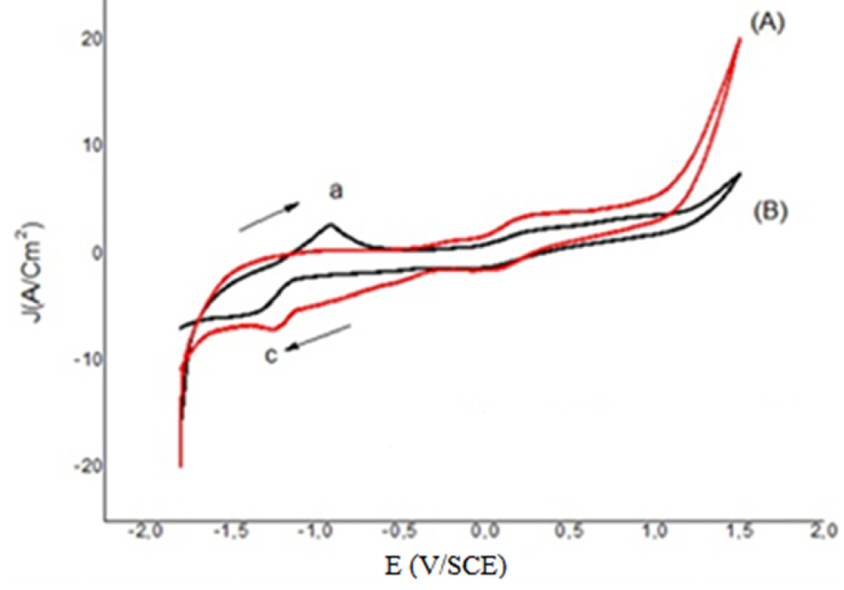
Furthermore, another reduction peak was observed at E = 0,103V / SCE, which was due to the reduction of emeraldine polyaniline salt (semi oxidized: PANI/ES) to leuco polyaniline emeraldine base [28].
3.3.1. Effect of applied potential
Chronoamperometry technique was used for the investigation of electrode processes at the modified electrode. Fig. 5 shows chronoamperograms obtained at imposed potentials of ŌłÆ800, ŌłÆ1100 and ŌłÆ1300 mV during 120 minutes.
As shown in the Fig. 5, a sudden decrease in the current was obtained after five minutes of polarization for all imposed potentials. The behavior of these curves is related to the instantaneous formation and the growth of the reduced zinc layer inside the artificial electrode that the active area was formed by banana peels and polyaniline. At a more negative potential, the hydrogen evolution destructs the formed fresh zinc nuclei and the current was maintained higher than those recorded at ŌłÆ800 and ŌłÆ1100 mV [29].
Fig.┬Ā5.
Chronoamperometry curves of (0.2 M ZnSO4+ 0.2 M NaCl),t= 2 h at various applied potentials.

The only modified parameter under this condition was the migration of the ionic zinc and its electrosorption inside the banana peels. The increase of the current was related to the enhancement of the zinc reduction in comparison with hydrogen evolution and its acceleration by the acidic medium (pH = 3.5). The same results were obtained by Aaboubi et al. (2011) [29].
As indicated in the Fig. 4, the curve of the voltamogram recorded after the chronoamperometry measurement at ŌłÆ1300 mV showed clearly peaks of reduction and oxidation of the zinc that moved from the electrolyte. Furthermore the reduction/oxidation peaks of the voltamogram recorded without the chronoamperometry polarization were not clearly appeared. The migration of the ionic zinc from the solution toward the working artificial electrode was confirmed by the EDX measures (Fig. 10).
3.3.2. Effect of contact time
The variation of the current intensity as a function of time was recorded in Fig. 6.
Curves of Fig. 6 show the effect of time on the polarization behavior of the artificial working electrode and indicate the similar process of ionic zinc migration that the maximum was obtained after the first few minutes of polarization (from 5 to 10 min.). The apparition of the plateau indicates the maximal transfer of Zn2+ from the medium to the working electrode, so the electro-sorption of zinc on the material increases with the increase of the experiment duration.
3.3.3. Effect of the initial zinc concentration
Our study reveals that the effect of the initial zinc concentration on the electro-sorption phenomenon has relatively influenced the electro-sorption process. As shown in the Fig. 7, for low concentrations varying between 0.02 and 0.1M, the Zn retention capacity was rapidly increased, which can be explained by the occupation of the active sites available in the adsorbent surface and the rapid diffusion of the zinc ions on the surface layer of the material. This capacity was gradually decreased to an equilibrium state at the zinc concentrations up to 0.2M due to the saturation of the active sites.
3.4. Adsorption isotherms
The modeling of the experimental data by the applying of the isotherm models allows to present the sorption mode of the zinc on the adsorbent and the influence of its concentrations dosages. Two models were the most accepted for similar studies of adsorption; Langmuir and Freundlich [30,31].
Langmuir equation and its linearization are presented in the following equations [32]
qm is the maximal adsorption capacity and b is a Langmuir constant.
The Freundlich models and its linearization are expressed in the equations (eq.05 and eq.06) [33].
Where n and K are the Freundlich constants.
The DubininŌĆōRadushkevich (D-R) (eq.07 and eq.08) and Tempkin isotherms were also studied (eq.10) [33,34].
Where K is the D-R constant (mol2/J2) and ╬Ą is the Polanyi potential which can be expressed by the eq.08.
Where, R (J / (mol K)) is the gas constant and T(K) is the absolute temperature. The constant K can give precious information about the free energy E (kJ/mol) of the adsorption by adsorbate molecule. It can be expressed by the eq. 09.
The study of these isotherms was effectuated by the application of the experimental data that were obtained at constant temperature of 25┬░C. The correlation coefficients and the estimated parameters are illustrated in the Table 2. The linearization of the studied models is shown in the Fig. 8.
According to the Table 2, the correlation coefficients of linear regressions that can fit appropriately the experimental data are that of the Langmuir isotherm, with a value of 0.903. Therefore, the adsorption of the zinc ions is based on a monolayer model at a homogeneous surface. The Langmuir isotherm allowed us to calculate the maximal theory adsorption capacity which was equal to 3.4188 mg/g. However, the other calculated correlation coefficients of the studied isotherms are too small low comparing with that calculated from the Langmuir model.
According to literature, the most widely applied models for the adsorption of heavy metals on the bioadsorbent are the Langmuir and Freundlich isotherms [30,35,36]. So, the adsorption of the zinc and a lot of other heavy metals on the orange peel xanthate in aqueous solution was obeyed to the Langmuir isotherm [31]. In addition, the Redrich-Peterson model is also accepted for fitting the experimental data adsorption of zinc and some heavy metals [34].
3.5. Characterization of the material after the electrosorption process
In order to prove the electrosorption of zinc on the ABP, SEM coupled with EDX analyses were investigated. The results are shown in Fig. 9.
According to the Fig. 9, several changes in the structure of ABP were observed after electrosorption process, so the surface became rough and the pores were covered with zinc.
Therefore, to compare the ABP composition before and after electro-sorption, an elemental analysis of EDX was carried out. The results are presented in the spectrum of Fig.10.
According to the EDX results, the presence of additional peaks of the zinc in the spectrum of the Fig.10b, is clearly appeared confirming the migration of zinc from the solution and its adsorption on the surface of the ABP.
The removal of the zinc ions from aqueous solution was studied in several researches using various anode materials. In the study of Torrent et al., (2003)[27], the authors have used the vitreous carbon and copper as working electrodes for the electrodeposition of the zinc from sulphate-gluconate. The convenient applied potential found in this work was similar to that found in our study, and the reduction of the zinc was favorite at less negative potentials [27].
Moreover, the nature of the adsorbent influences the zinc electrosorption. According to literature, different materials were investigated for similar treatment such as polypyrrole coated on the sawdust (PPy/SD) [20], modified sugarcane bagasse and modified wood sawdust [37], succinylgrafted chitosan [1] permanganate treated pine chips [38]. The adsorption removal capacity was improved by our ABP to a percentage yield up to 99%. This later is very important compared with the other materials and techniques studied in previous researches such as the modified sugarcane bagasse and the modified wood sawdust that were given a maximum removal percentage of 90% [37].
Therefore, our process was very rapid because it attained an important reduction and the electrosorption of zinc during 10 min of electrolysis.This rapidity is benefic for the treatment of large amount of effluents charged in zinc ions because it consumed a small quantity of energy and didnŌĆÖt produce any other toxic forms.
4. Conclusion
In this work, an electrochemical system was developed. It was based on banana peels chemically activated to study the electro-sorption removal of Zn (II) from aqueous solution. Optimization of operational conditions that can affect the chronoamperometry allowed us to fix these parameters at E = ŌłÆ1.3 V/SCE, t = 2 h and zinc concentration of 0.2 M. The modeling of experimental data revealed that the adsorption was obeyed to the Langmuir isotherm with a correlation coefficient of 0.90 and a maximal adsorption capacity of 3.41 mg/g. The reduction of Zn (II) ions in the cathode and the migration/adsorption of the Zn(0) to the working electrode were improved by the chronoamperometric measurement. Thus, the cyclic voltammograms obtained after scanning in the potential range of [ŌłÆ1.8 V to 1.5V] showed the cathodic peak at - 1.14V/SCE that corresponds to the reduction of the Zn (II) to Zn (0) and the anodic peak at ŌłÆ0.9 V that corresponds to the oxidation of the Zn (0) to Zn (II). Therefore, under the optimum operational conditions the electro-sorption yield could attain a percentage of 99.99%. The SEM and EDX analyses showed the changes of the ABP structure after electro-sorption confirming the adsorption of the zinc on its surface. The electro-sorption appeared to be a useful technique for the removal of zinc from wastewater using an electrode prepared with chemically activated banana peels.







